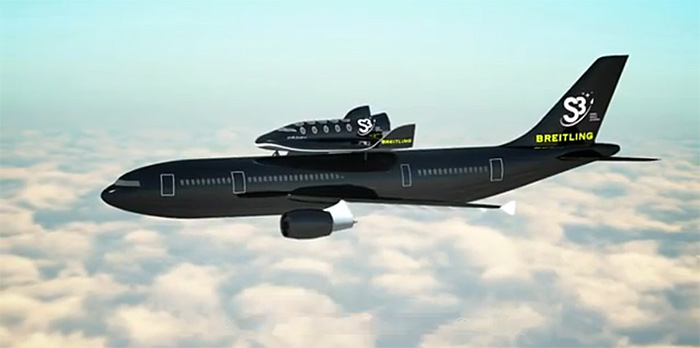Southern Georgia has joined the rapidly growing list of potential commercial spaceports sites.
[google-map-v3 width=”700″ height=”350″ zoom=”7″ maptype=”hybrid” mapalign=”center” directionhint=”false” language=”default” poweredby=”false” maptypecontrol=”true” pancontrol=”true” zoomcontrol=”true” scalecontrol=”true” streetviewcontrol=”true” scrollwheelcontrol=”false” draggable=”true” tiltfourtyfive=”false” addmarkermashupbubble=”false” addmarkermashupbubble=”false” addmarkerlist=”30.942188, -81.530668{}airport.png{}Aero-Spaceport Site” bubbleautopan=”true” showbike=”false” showtraffic=”false” showpanoramio=”false”]
The Camden County Joint Development Authority announced today that its board has voted to explore the development of an “Aero-Spaceport” on land currently owned by Union Carbide Corporation and formerly leased to Bayer CropScience. In addition to functioning as a spaceport, the project would allow the city of St. Marys to relocate the existing St. Marys Municipal Airport away from Naval Submarine Base Kings Bay, the largest employer in the region. Senior Navy officials have stated that the existing airport poses safety and security concerns.
[google-map-v3 width=”700″ height=”350″ zoom=”12″ maptype=”hybrid” mapalign=”center” directionhint=”false” language=”default” poweredby=”false” maptypecontrol=”true” pancontrol=”true” zoomcontrol=”true” scalecontrol=”true” streetviewcontrol=”true” scrollwheelcontrol=”false” draggable=”true” tiltfourtyfive=”false” addmarkermashupbubble=”false” addmarkermashupbubble=”false” addmarkerlist=”30.942188, -81.530668{}airport.png{}Aero-Spaceport Site” bubbleautopan=”true” showbike=”false” showtraffic=”false” showpanoramio=”false”]
The proposed Aero-Spaceport site includes more than 4,000 acres of land, a small private airfield, and a rocket-engine testing facility that was used during the Apollo program. Saturn rocket engines were shipped to the site by barge along the adjoining Intracoastal Waterway.
Other sites for the new St. Marys Airport are under consideration, but none of those sites have the same spaceport potential. Joint Development Authority executive director David Keating said, “Launching off out over marsh and then to ocean-based airspace, that’s what’s so special about this property, quick access to ocean-based airspace. And because of these unique features, the property has been generating significant attention for amongst aerospace and commercial-space companies.”
The Georgia Department of Economic Development has been exploring the market potential of a commercial spaceport at the site and reports “significant industry interest.” The proposed spaceport would accommodate both horizontal and vertical launches. Horizontal-launch vehicles would share dual-use facilities with the new airport.
[google-map-v3 width=”700″ height=”350″ zoom=”14″ maptype=”hybrid” mapalign=”center” directionhint=”false” language=”default” poweredby=”false” maptypecontrol=”true” pancontrol=”true” zoomcontrol=”true” scalecontrol=”true” streetviewcontrol=”true” scrollwheelcontrol=”false” draggable=”true” tiltfourtyfive=”false” addmarkermashupbubble=”false” addmarkermashupbubble=”false” addmarkerlist=”30.942188, -81.530668{}airport.png{}Aero-Spaceport Site” bubbleautopan=”true” showbike=”false” showtraffic=”false” showpanoramio=”false”]
If the project receives the necessary funding and regulatory approval, construction could begin as early as 2014. Initial Aero-Spaceport operations could begin in late 2014 or early 2015.















